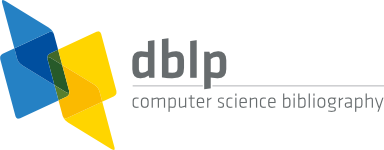| 2017 | |
| [1] | , "Experience Report: Introducing Kanban into Automotive Software Project", In e-Informatica Software Engineering Journal, vol. 11, no. 1, pp. 39–57, 2017.
DOI: 10.5277/e-Inf170102. Download article (PDF)Get article BibTeX file |
Authors
Marek Majchrzak, Łukasz Stilger
Abstract
The boundaries between traditional and agile approach methods are disappearing. A significant number of software projects require a continuous implementation of tasks without dividing them into sprints or strict project phases. Customers expect more flexibility and responsiveness from software vendors in response to the ever-changing business environment. To achieve better results in this field, Capgemini has begun using the Lean philosophy and Kanban techniques.
The following article illustrates examples of different uses of Kanban and the main stakeholder of the process. The article presents the main advantages of transparency and ways to improve the customer co-operation as well as stakeholder relationships. The Authors try to visualise all of the elements in the context of the project.
There is also a discussion of different approaches in two software projects. The article fokuses on the main challenges and the evolutionary approach used. An attempt is made to answer the question how to convince both the team as well as the customer, and how to optimise ways to achieve great results.
Keywords
kanban, lean, automotive, scrum, agile
References
- T. Ohno, Toyota Production System: BeyondLarge-Scale Production. Cambridge, MA: Productivity,1988.
- J. Koplin, S. Seuring, and M. Mesterharm, “Incorporatingsustainability into supply manage Volkswagen AG,” Journal of Cleaner Production,Vol. 15, No. 11, 2007, pp. 1053–1062.
- J.P.Womack and D.T. Jones, “From lean productionto the lean enterprise,” Harvard BusinessReview, Apr. 1994.
- M. Poppendieck and T. Poppendieck, Lean SoftwareDevelopment: An Agile Toolkit. Boston,MA, USA: Addison-Wesley Longman PublishingCo., Inc., 2003.
- D.J. Anderson, Kanban: Successful EvolutionaryChange for Your Technology Business. Blue HolePress, Apr. 2010, paperback.
- H. Kniberg, Kanban and Scrum – Making theMost of Both. Lulu.com, 2010.
- K. Petersen and C. Wohlin, “Measuring the flowin lean software development,” Software: Practiceand Experience, Vol. 41, No. 9, 2011, pp.975–996.
- M. Host, B. Regnell, J.N. och Dag, J. Nedstam,and C. Nyberg, “Exploring bottlenecksin market-driven requirements management processeswith discrete event simulation,” Journalof Systems and Software, Vol. 59, No. 3, 2001,pp. 323–332.
- M. Staron and W. Meding, “Monitoring bottlenecksin agile and lean software developmentprojects,” Product-Focused Software Process Improvement,2011, pp. 3–16.
- M.J. Michael Prokop, “Use of kanban in theoperations team at spotify,” InfoQ, Sep. 2010.
- H. Kniberg, Lean from the Trenches: ManagingLarge-Scale Projects with Kanban. PragmaticBookshelf, 2011.
- M. Ikonen, E. Pirinen, F. Fagerholm, P. Kettunen,and P. Abrahamsson, “On the impact ofKanban on software project work: An empiricalcase study investigation,” in 16th IEEE InternationalConference on Engineering of ComplexComputer Systems (ICECCS). IEEE, 2011, pp.305–314.
- P. Middleton and D. Joyce, “Lean softwaremanagement: BBC worldwide case study,”IEEE Transactions on Engineering Management,Vol. 59, No. 1, 2012, pp. 20–32.
- P. Middleton, A. Flaxel, and A. Cookson, “Leansoftware management case study: Timberline inc.”in Extreme Programming and Agile Processesin Software Engineering. Berlin–Heidelberg:Springer, 2005, pp. 1–9.
- M. Majchrzak, Ł. Stilger, and M. Matczak,“Working with agile in a distributed environment,”in Software Engineering from Researchand Practice Perspective, L. Madeyski andM. Ochodek, Eds. Polish Information ProcessingSociety Scientific Council, 2014, pp. 41–54.
- K. Beck and C. Andres, Extreme ProgrammingExplained: Embrace Change, 2nd ed.Addison-Wesley Professional, 2004.
- M. Robert C., Clean Code: A Handbook of AgileSoftware Craftsmanship, 1st ed. Upper SaddleRiver, NJ, USA: Prentice Hall PTR, 2008.
- Atlassian, JIRA documentation, (2016). [Online].https://confluence.atlassian.com/display/JIRA/JIRA+Documentation
- Atlassian, Specification – confluence advancededitor, (2016). [Online]. http://confluence.atlassian.com/display/DOC/Specification+-+Confluence+Advanced+Editor
- E. Shihab, C. Bird, and T. Zimmermann, “Theeffect of branching strategies on software quality,”in 2012 ACM-IEEE International Symposiumon Empirical Software Engineering and Measurement,ESEM, 2012, pp. 301–310. [Online].http://doi.acm.org/10.1145/2372251.2372305
- Atlassian, JIRA service desk documentation,(2016). [Online]. https://confluence.atlassian.com/servicedeskserver030/
- Go2Group, Connect all, (2016). [Online].http://www.go2group.com/connectall/
- K.S. Rubin, Essential Scrum: A Practical Guideto the Most Popular Agile Process, 1st ed.Addison-Wesley Professional, 2012.
- M. Cohn, Agile Estimating and Planning. UpperSaddle River, NJ, USA: Prentice Hall, 2005.
- E.M. Rogers, Diffusion of Innovations, 5th ed.Simon and Schuster, 2003.
- K.L. Jeffrey, The Toyota Way: 14 ManagementPrinciples From The World’s Greatest Manufacturer.McGraw-Hill, 2004.








